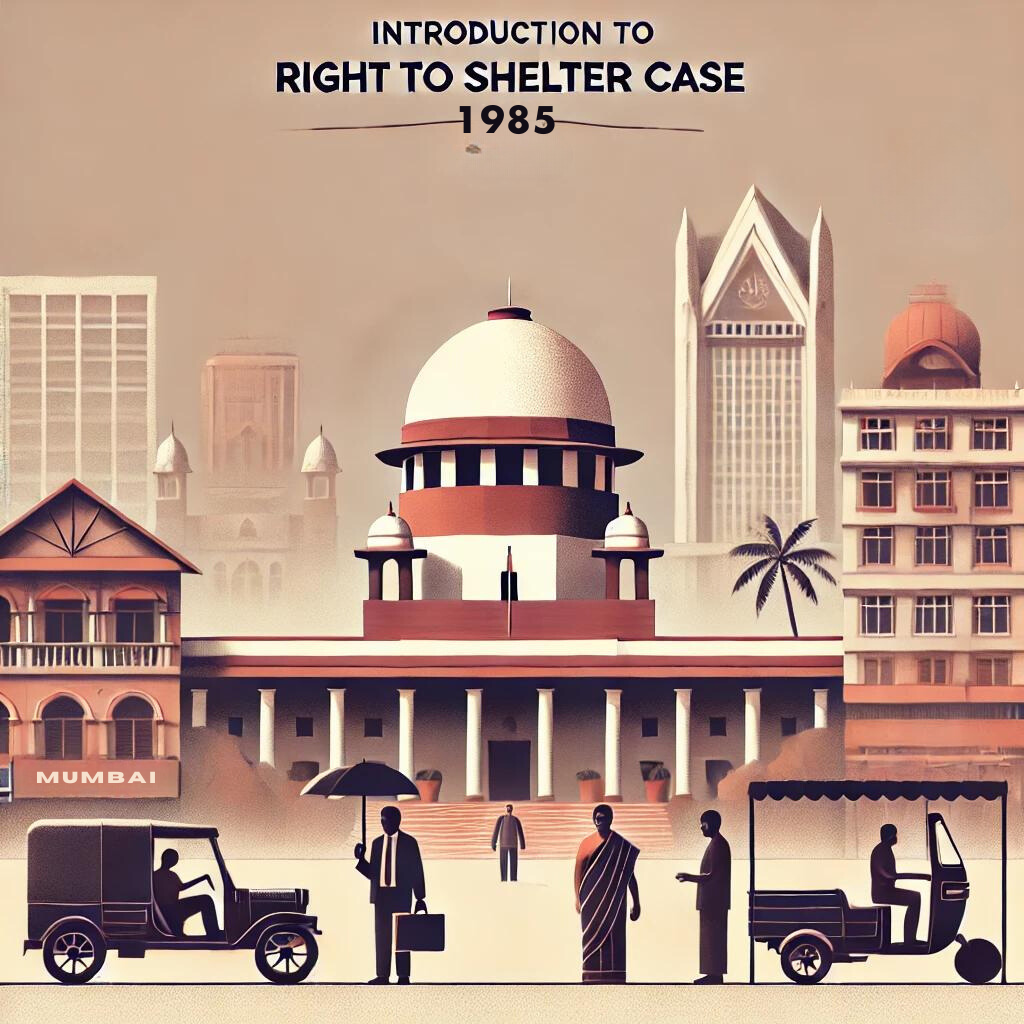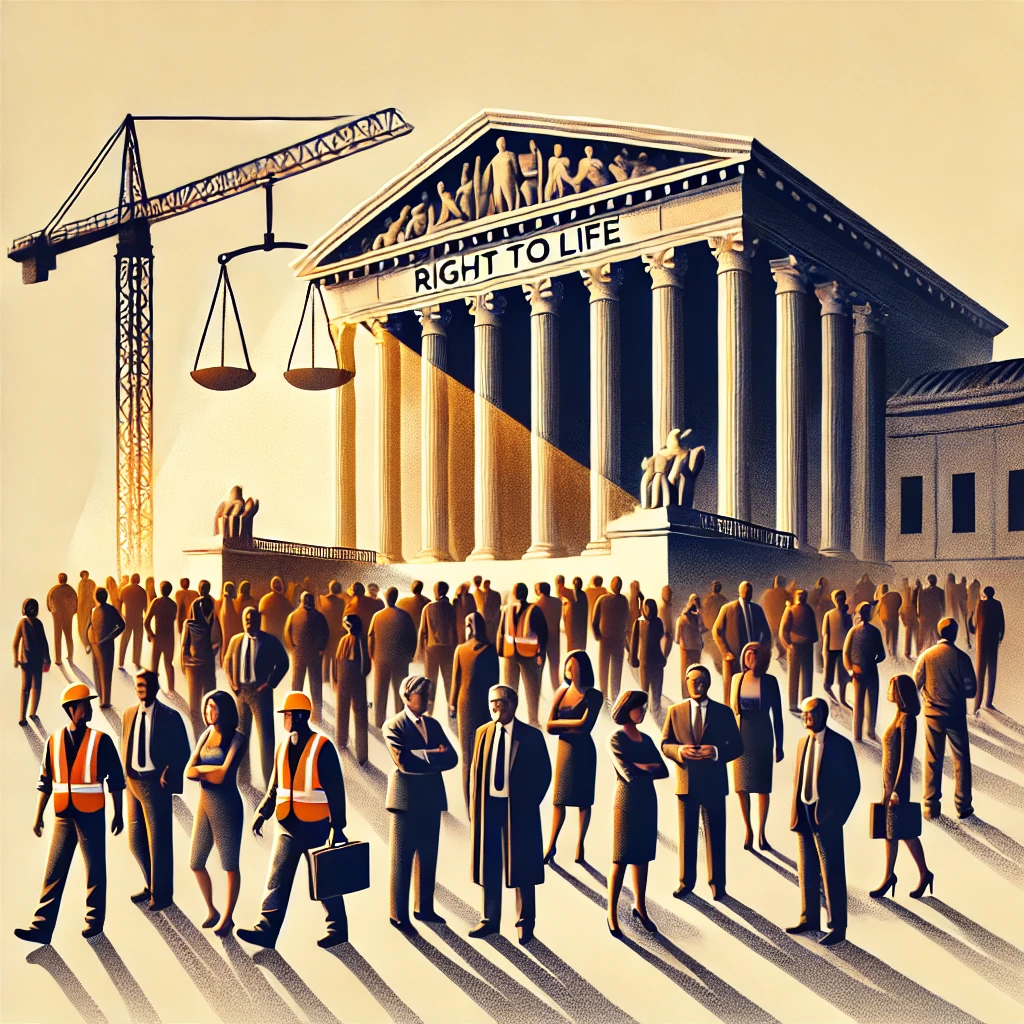In a landmark judgment that underscored the essence of human dignity within the constitutional framework of India, the Supreme Court deliberated on the fundamental rights of the poorest urban dwellers. The case originated from a beautification project initiated by the State of Maharashtra and the Bombay Municipal Corporation, aiming to evict pavement dwellers in Mumbai. A journalist, moved by the plight of these individuals, challenged the eviction notices, arguing that such actions infringed upon the fundamental rights to livelihood and shelter, which are implicitly protected under Article 21 (Right to Life) and Article 19 of the Constitution of India.

Facts
Eviction Drive Description
In a move aimed at beautifying urban spaces, the State of Maharashtra and the Bombay Municipal Corporation initiated an eviction drive to remove pavement dwellers. This decision, part of a larger beautification project, raised concerns about the welfare of those who call the pavements their home.
Petitioner’s Argument
The petitioner highlighted the dire consequences such eviction drives could have on pavement dwellers, arguing that displacing them without offering any alternative would inflict greater harm and distress, exacerbating their vulnerability.
Constitutional Violation Contention
Central to the petitioner’s argument was the assertion that the eviction drive constituted a violation of Articles 21 and 19 of the Constitution of India. These articles enshrine the rights to life and personal liberty and to reside and settle in any part of the territory of India, respectively.
Special Leave Petition
A journalist, moved by the plight of the pavement dwellers, filed a Special Leave Petition questioning the validity of the eviction notices. This legal challenge brought the issue to the forefront of a national debate on the rights of the urban poor.
Issues Involved
The core issue addressed in this case revolves around the legality of eviction notices served to pavement dwellers in the context of their fundamental rights under the Constitution of India. Specifically, the court was tasked with determining whether such evictions, as part of a beautification drive by the State of Maharashtra and Bombay Municipal Corporation, infringed upon the rights to livelihood and shelter—elements deemed integral to the right to live with dignity as enshrined in Article 21, and possibly in conflict with the freedoms guaranteed under Article 19.
This case brings to the forefront the delicate balance between state-led developmental initiatives and the protection of fundamental human rights, challenging the judiciary to reconcile the government’s pursuit of public welfare with the imperative to safeguard individual liberties. The resolution of this conflict necessitates a nuanced understanding of the Constitution’s provisions, making it a pivotal learning point for judiciary aspirants to grasp the intricacies of constitutional law and its application in protecting the rights of the marginalized.
Observations
Supreme Court’s Stance on Right to Live
The Supreme Court underscored that the Right to Live enshrined in Article 21 encompasses the right to livelihood and shelter. This interpretation affirms that a life of dignity includes not just the bare necessities of existence but a broader spectrum of rights essential for human flourishing.
Necessity of Alternate Remedy
In its observations, the Supreme Court emphasized the need for providing alternate living arrangements to those affected by eviction drives. Without such provisions, the Court noted, the fundamental rights of the pavement dwellers would be contravened, highlighting the state’s responsibility to ensure no individual is deprived of their basic rights.

Conclusion
In the landmark judgment discussed, the Supreme Court has once again underscored the expansive interpretation of the Right to Life under Article 21 of the Constitution of India, affirming that it encompasses much more than mere physical survival. The inclusion of the Right to Livelihood and Shelter as essential components of the Right to Life is a testament to the judiciary’s commitment to ensuring a life of dignity for every citizen. This ruling not only champions the cause of the marginalized pavement dwellers but also sets a precedent for future cases where fundamental rights are in jeopardy due to state actions.
For judiciary aspirants, this case serves as a crucial study in understanding the dynamic nature of constitutional interpretation and the balance between state interests and individual rights. It reinforces the idea that the law is not just a set of rules but a living, evolving entity that seeks to uphold justice and human dignity above all. As future guardians of the law, judiciary aspirants must imbibe the essence of such landmark judgments, for they exemplify the core values of empathy, equity, and fairness that should guide their legal journey. This case is a compelling reminder of the transformative power of the judiciary in shaping a more inclusive and compassionate society.

